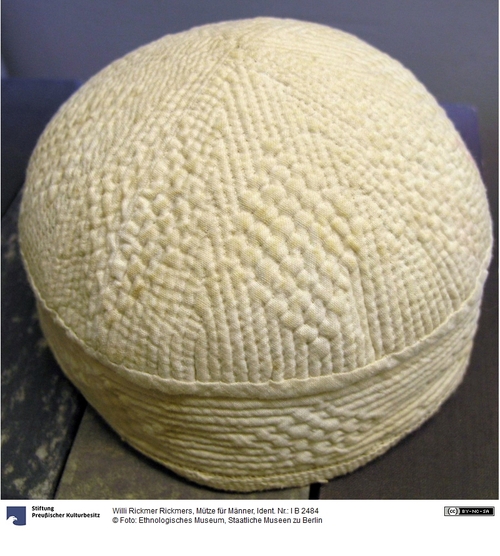Beschreibung im Katalog Hellbusch/Soltkahn: "Mützen aus Zentralasien und Persien", Abb. 11
Material der Mütze: Baumwolle, Oberstoff weißer Batist
Material der Verzierung: weißes Baumwollgarn.
Schnureinlage : Baumwolle
Das Grundmusters des Tellers ist ein achtfach wiederholtes abgestepptes Winkelmuster. Die Nähte sind dicht mit gereihten Vorstichen gesteppt. Die Oberfläche wirkt plastisch und "blasig". Die Kettfäden des Stick-Webrandes bestehen aus vierfach, die Schweißfäden aus zweifach in S-Richtung gedrehten weißem Baumwollgarn.
Sammler: Rickmers, Willi Rickmer
en

